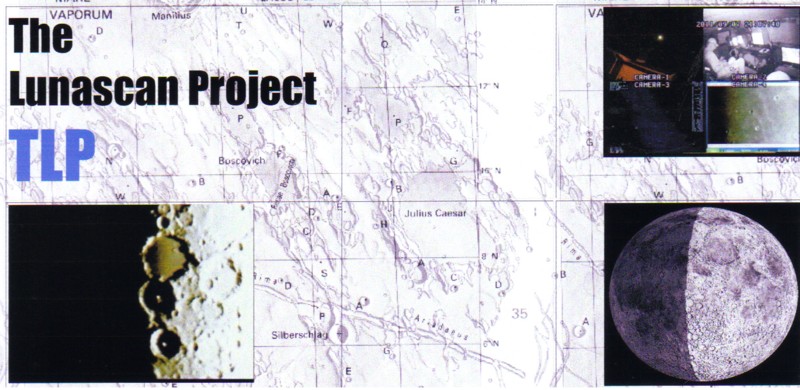
STU
Scope
Transport Unit

|
STU
Scope
Transport Unit
|
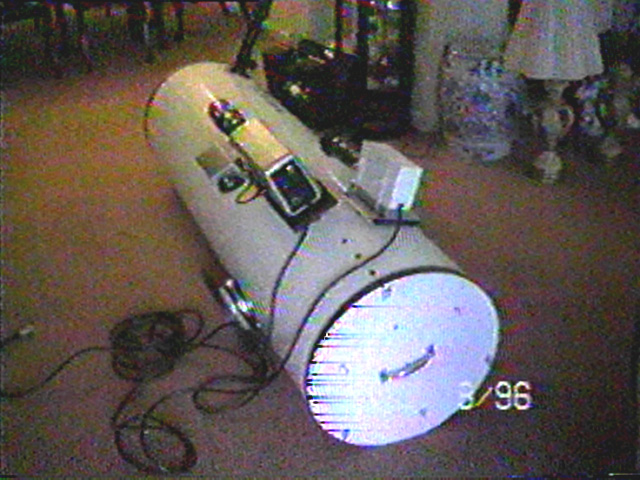
| Updated:
13 Oct 2020 After three missions with the 4-1/2" f/8 (Fig. 12), mission 4 began with the new 16" and ended with mission 27, a total of 23 missions. All used the GBC-400 b&w 400-line scanning camera. The old story, bigger is always better, depends on what the mission was. In our case we weren't looking at nebula and galaxies, and the light-gathering power was detrimental to contrast and definition, so we eventually sold the 16" mirror and used the other parts to build a better, proven system for lunar observations, a 10" f/6. |
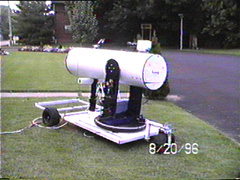 Fig. 2
|
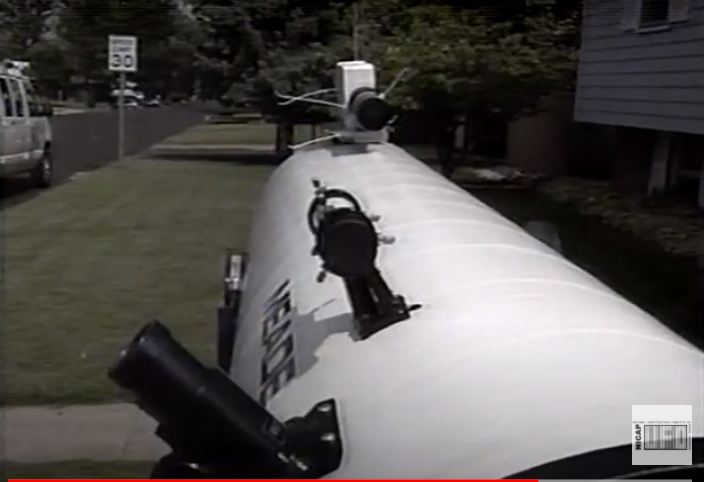 Fig. 3 |
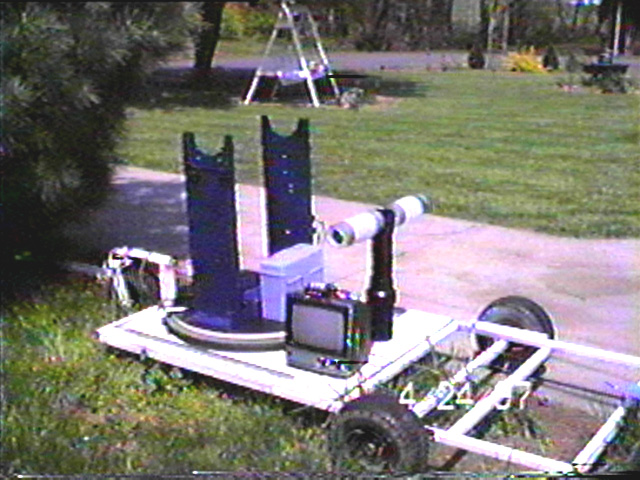 Fig. 4
|
| Fig. 2 illustrates what the STU looked like after two personnel carried the massive 16" scope outside. After the session the massive telescope with the heavy 16" mirror had to be moved back inside to be protected from the weather. On 8 August 1996 the Scope Transport Unit (Fig. 2 & 4) replaced the simple pressed wood DOB mount. This versatile masterpiece was used for 25 missions, beginning with mission 17. At the top of this web page you will see the plywood cover used to protect it from the midwest weather. Note the 12" CRT monitor used to help align the system. The same STU and yoke was used later on the better and smaller 10" f/6 on 28 September 1998 |
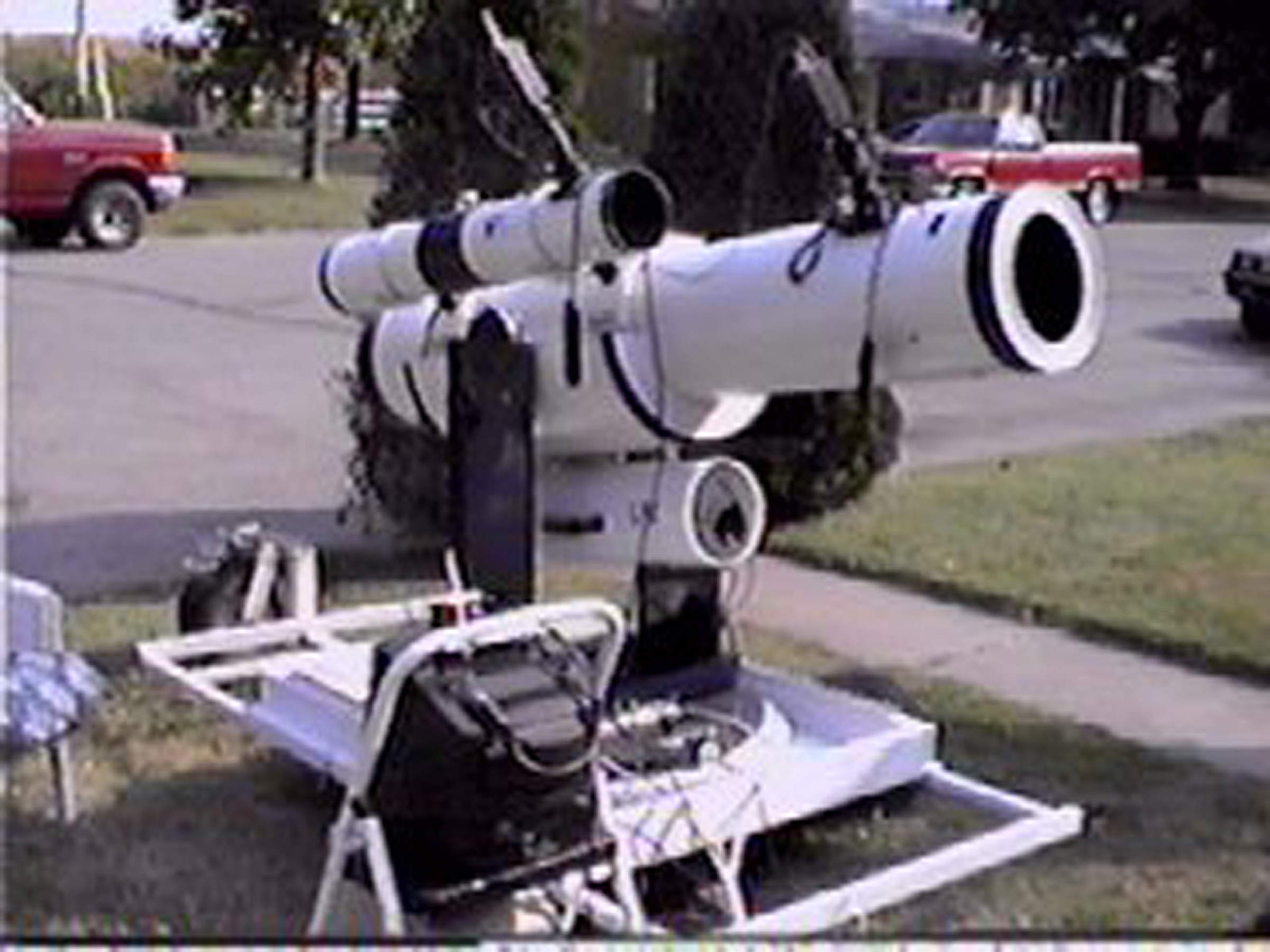
| After
three years and 27 missions, on 28 September 1998 the
new 10" f/6 was operational. By building a "bushing"
from part of the original 16" telescope tube, the same
yoke and STU was utilized. This photo shows the Scope
Transport Unit with three scanning systems. The HPS
was the 10" f/6, used for high powered scanning.
The MPS 4.5" f/8 simultaneously scanned at medium
power while the LPS was used for low power imaging.
The MPS picked up a strange object on 29 September
1998 on mission 29. |
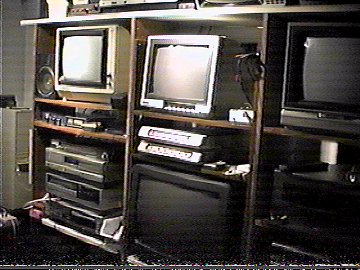
Fig. 6. The control center.
|
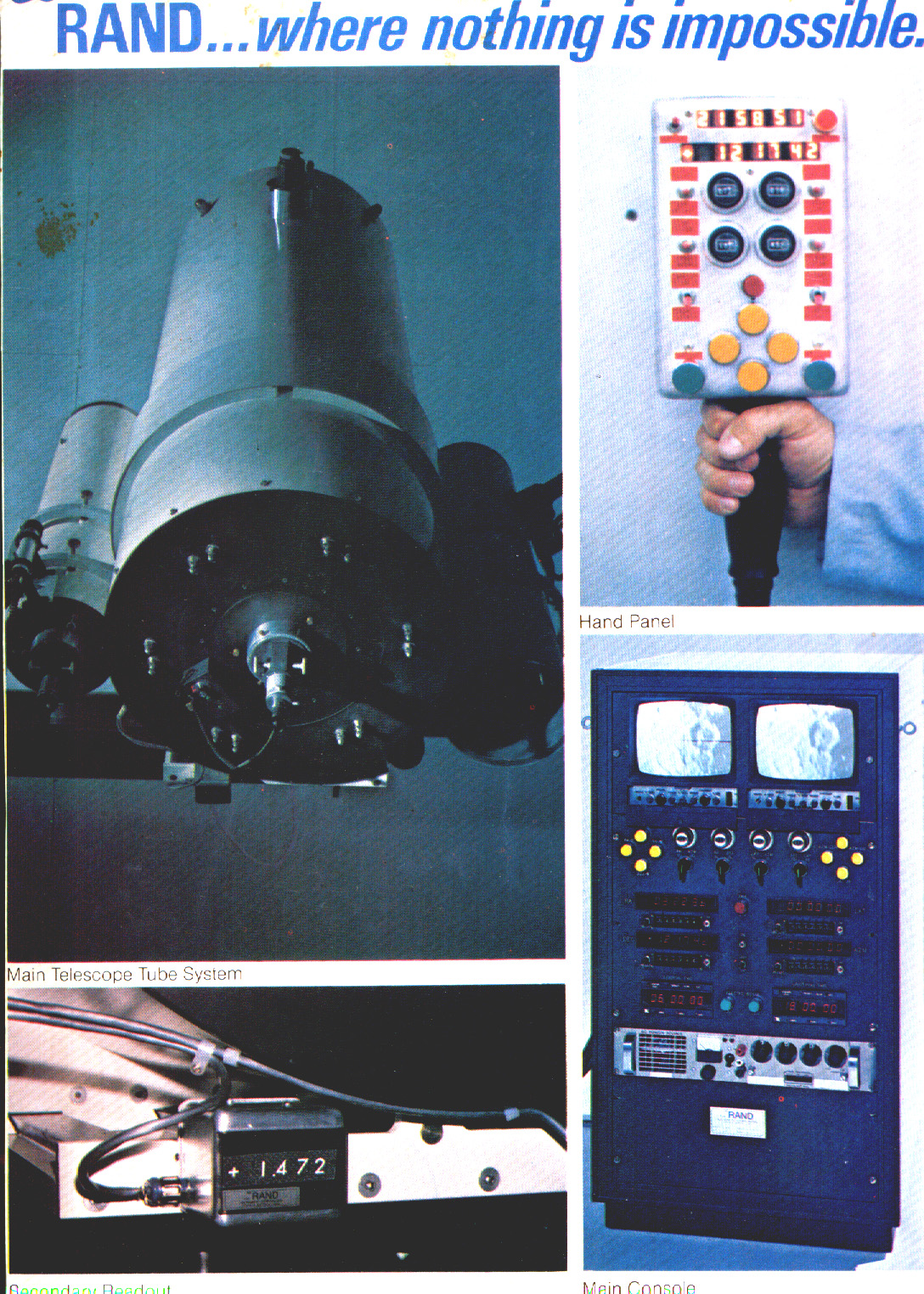 Fig. 7 The RAND system. |
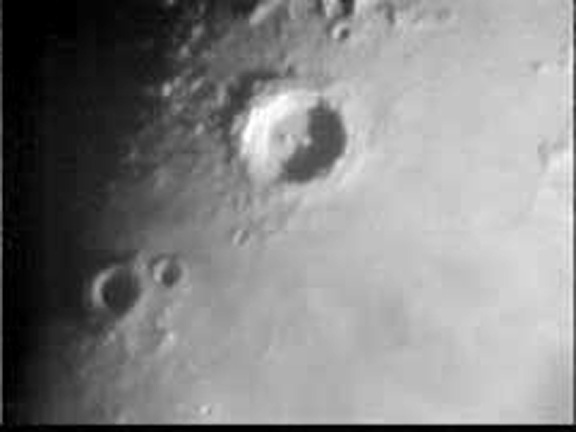 Fig. 8 The breathtaking
image of the great 52-mile diameter walled crater,
Copernicus.
|
| The
idea of having a system with a lab-type atmosphere and
an appropriate-sized telescope was on the drawing board
for years. The original idea would have been a big
mistake since it was to be a small outbuilding on skids
(for tax purposes) but basically too heavy to actually
move around. It would have needed a removable roof and
the scope mounted inside, which would have been pretty
close quarters. The new concept had many benefits but
there were better ideas yet down the road. The
inspiration to actually start a project, later
code-named "The Lunascan Project" was the ad for the
RAND system, Fig. 7. It was necessary to fabricate a 50'
umbilical cable made up of four coax lines, a/c power,
and lines to the Tech200 DobDriver II computer. |
Fig. 9
16" scope on STU with umbilicals. |
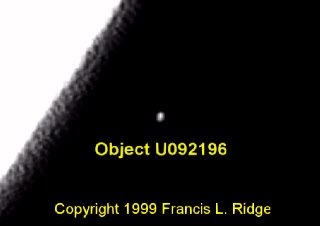 Fig. 10 The SE lunar limb and ULO092196 plainly visible. |
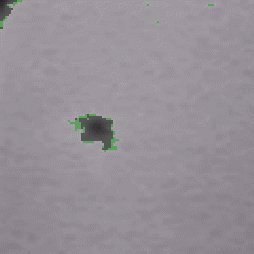 Fig. 11 Solarized image of
U092196.
|
| The STU was used the first time on mission 17 and mission 23 had a real surprise on 21 September 1996. While doing routine scanning procedures where the scope was cranked to the eastern lunar limb near Mare Crisium, then letting the earth's rotation pull the scope across the moon over and over, on one scan we noticed something we had never seen before. With this massive scope and its inherent brightness, we had never seen or imaged a planet near the moon's bright limb. But there were no planets in the area. See the full story and video at: U092196 |
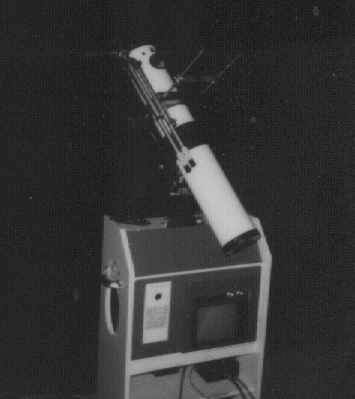 Fig. 12. Early attempt to create a RAND-type system with a 4.5" f/8, 900 mm. |
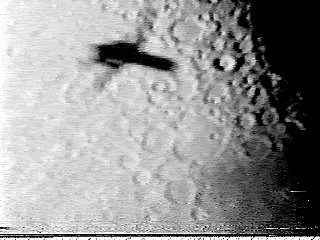 Fig. 13. This object was first thought to be part of a flight of geese. simrange 1500 miles, 800 mile FOV. |
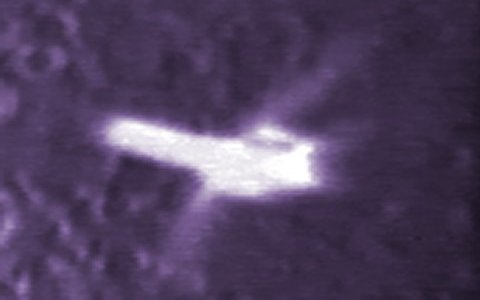 Fig. 14 Negative and
inverted image of object turns out to be a
short-coupled business jet.
|
| The early iteration of The Lunascan Project used an experimental version of the RAND idea and our old 4" f/8 (mission 43) in 1995. Within two months the massive 16" replaced it, but it was used on the piggyback 10" f/6 system on mission 29 and caught the unidentified object on 29 September 1998. What we thought was a part of a flight of geese, turned out to be a short-coupled business jet. See videos at U092998 |
| Right
after The Lunascan Project was underway, its cameras
were running, catching breath-taking views of the
lunar surface. One of our favorite target areas was
the 15,000 foot-high Apennine Mountains looping around
the 37-mile-wide Eratosthenes with its central peak. |